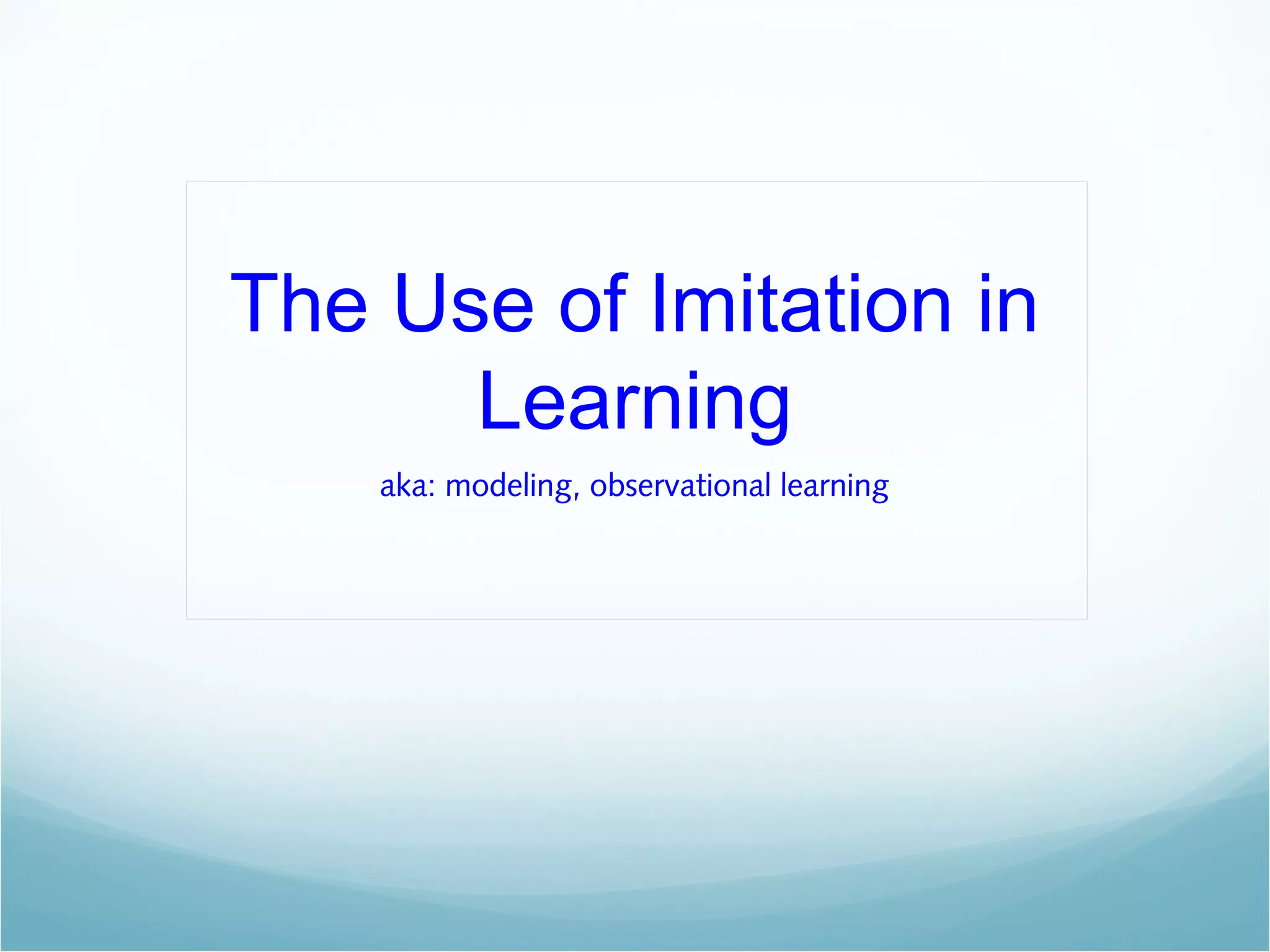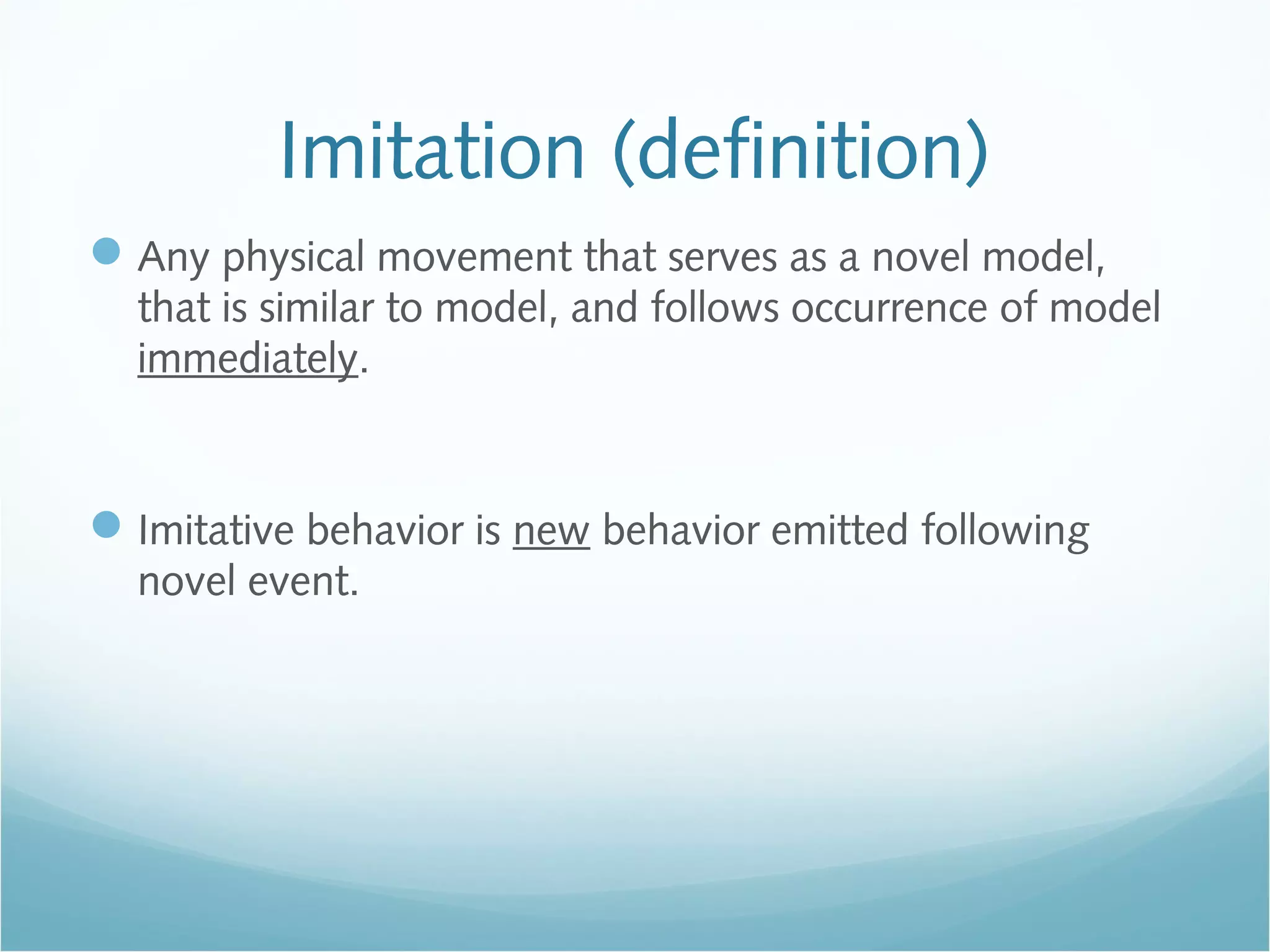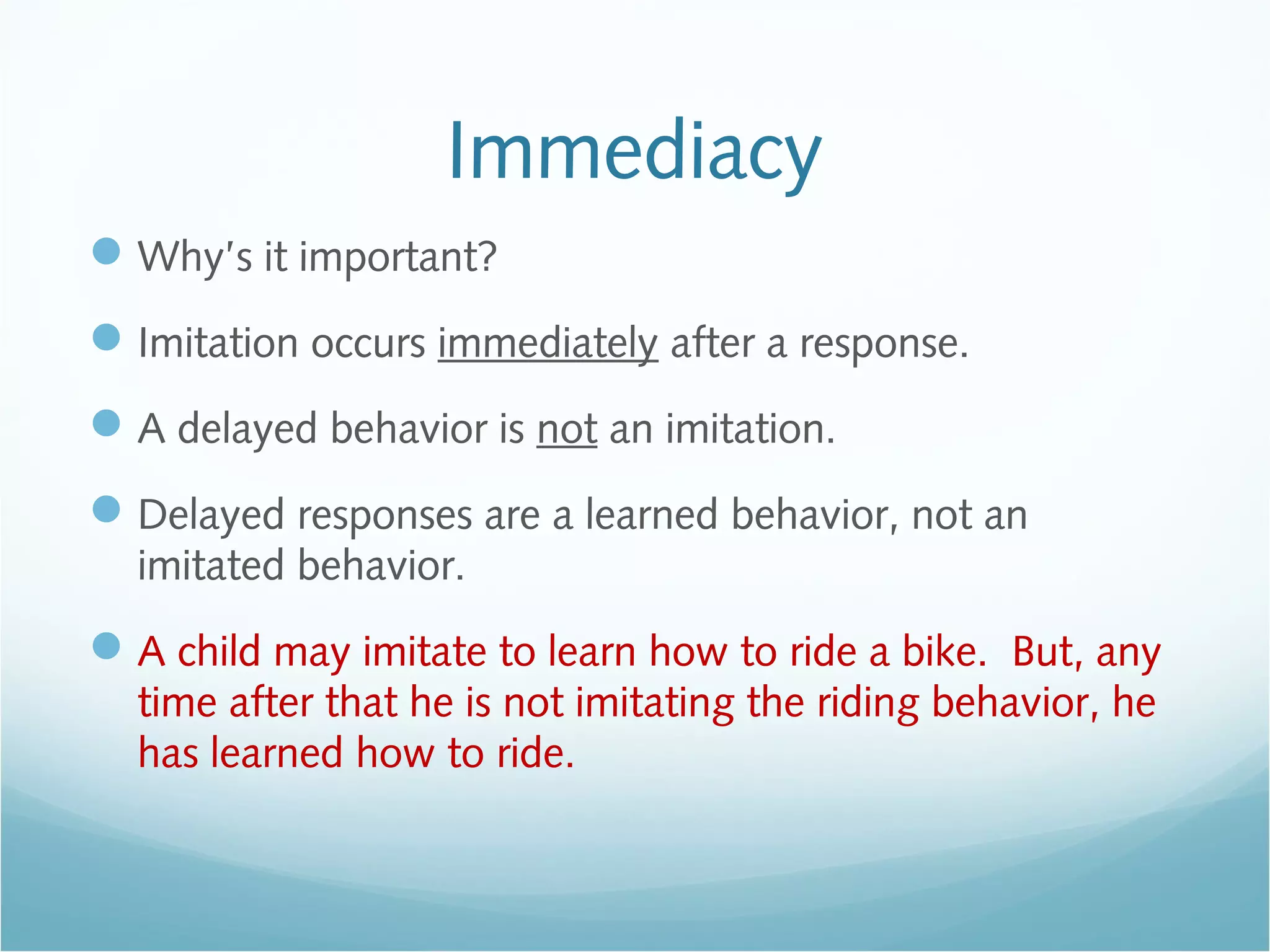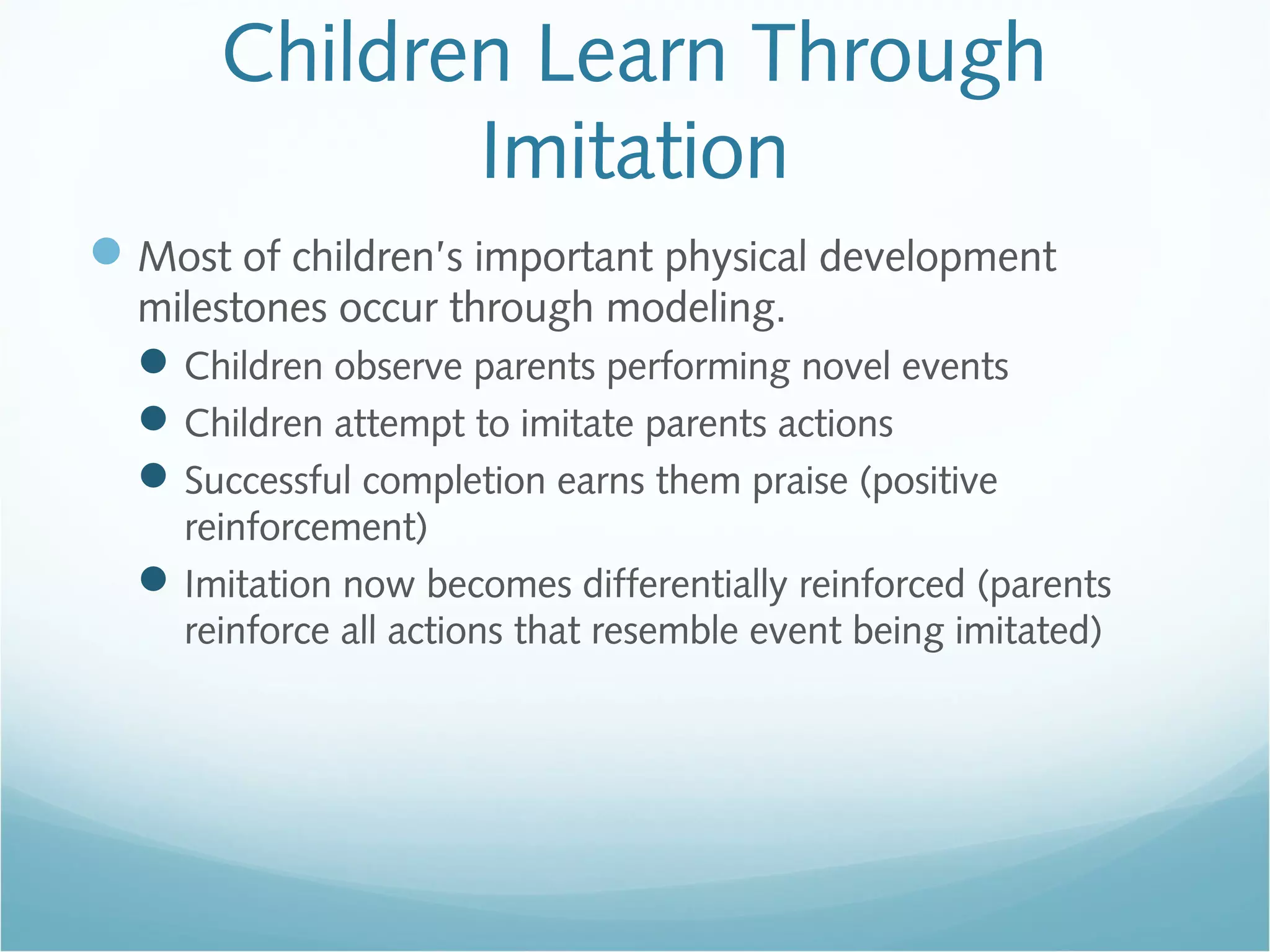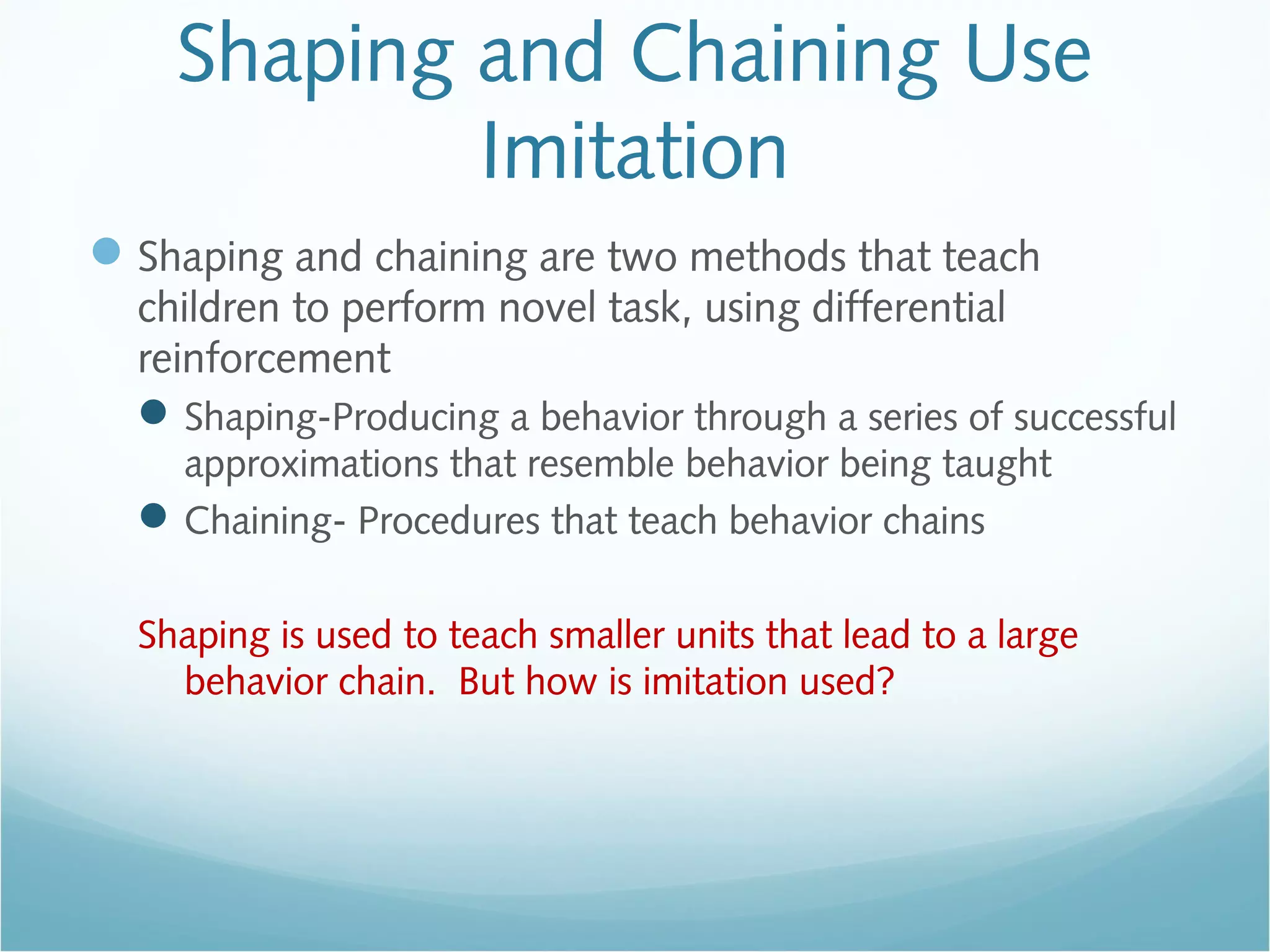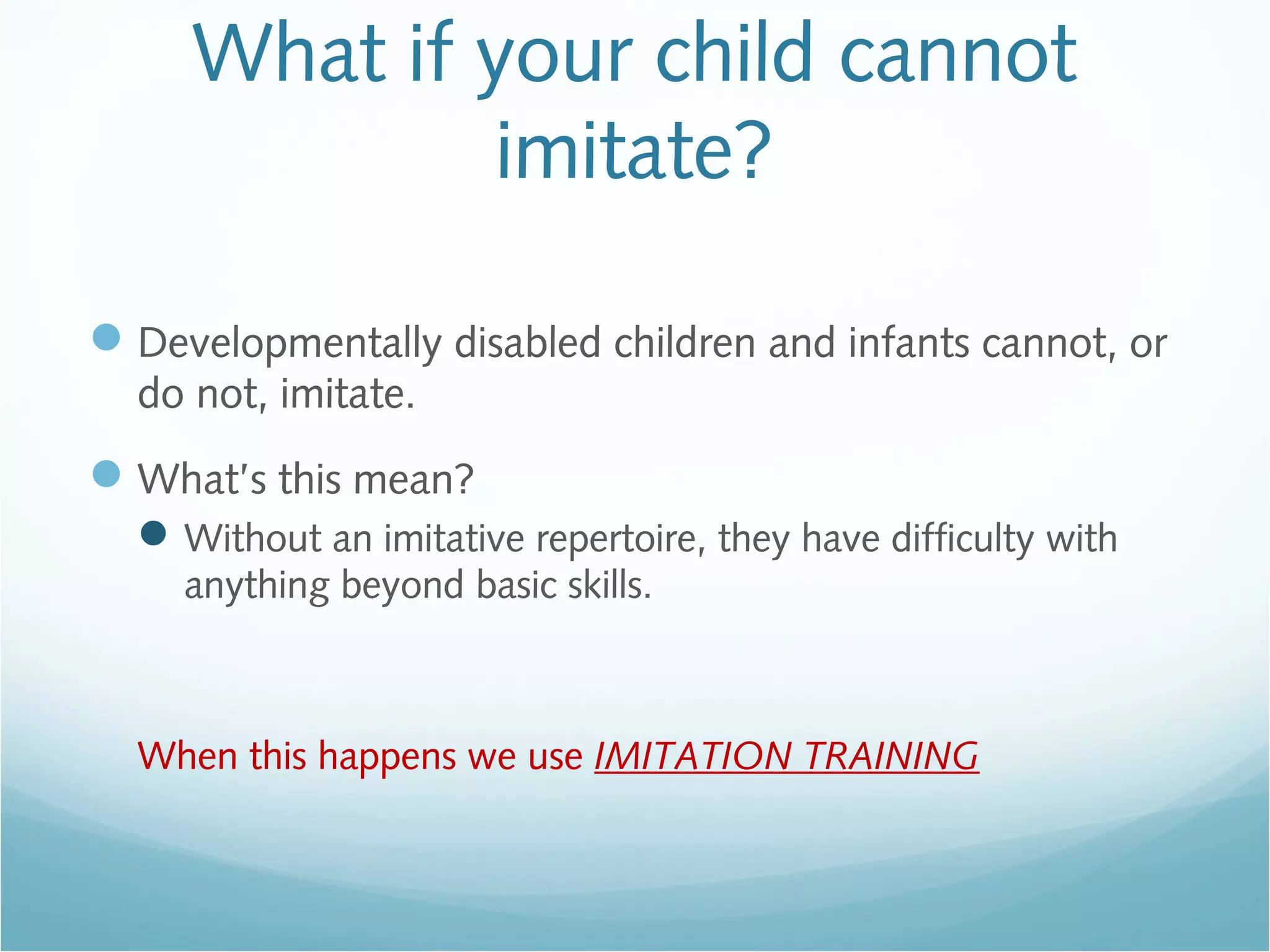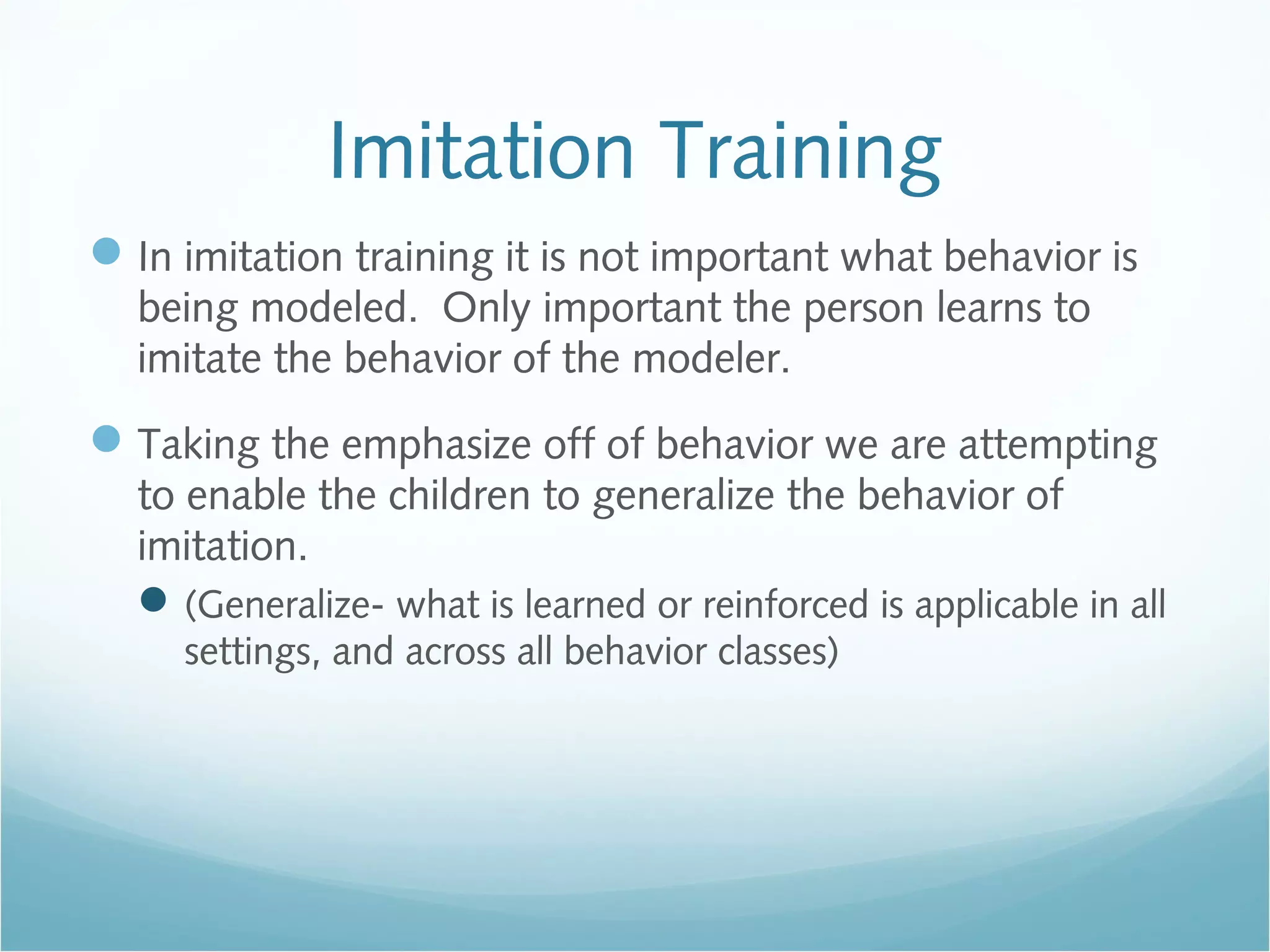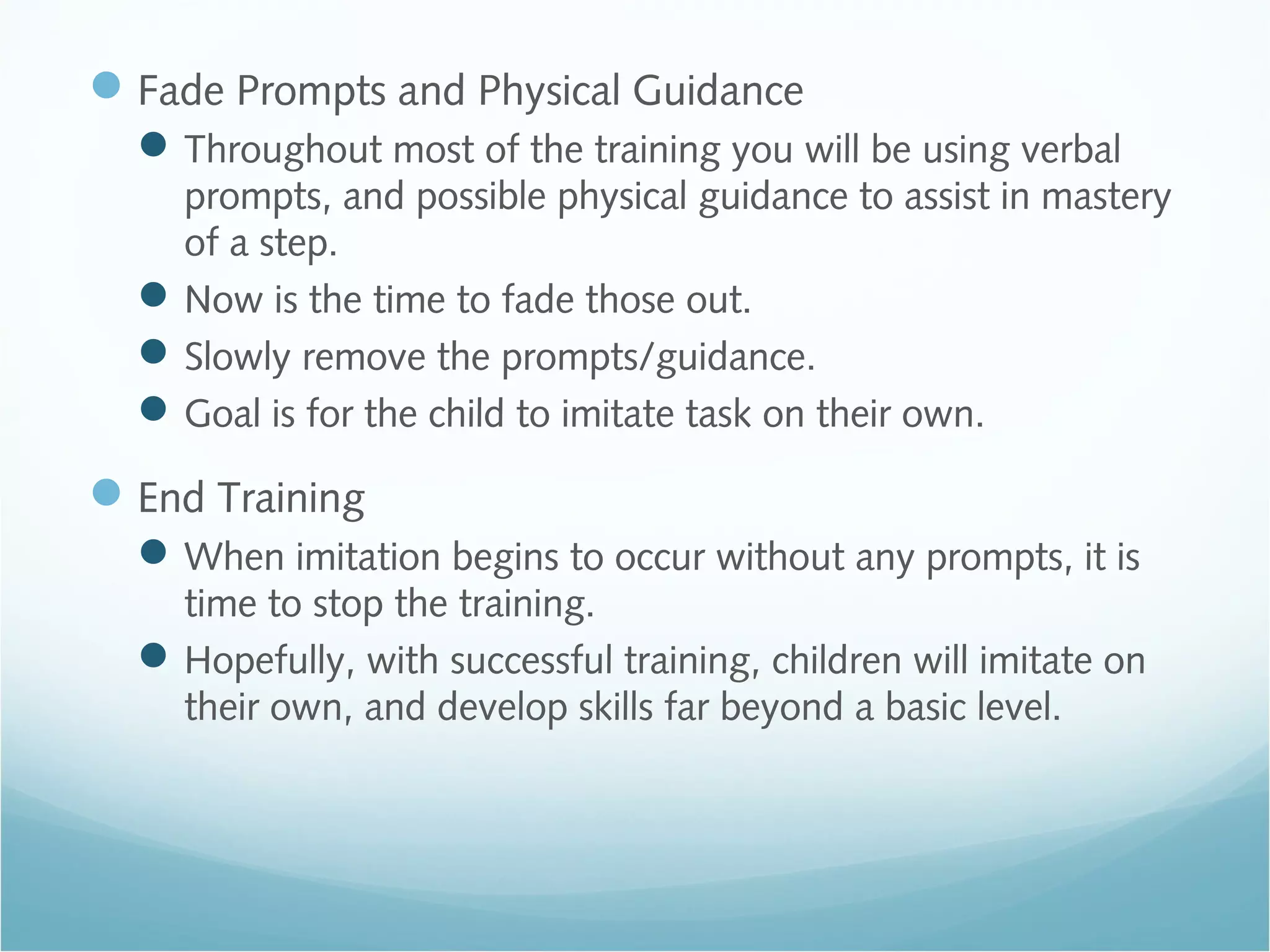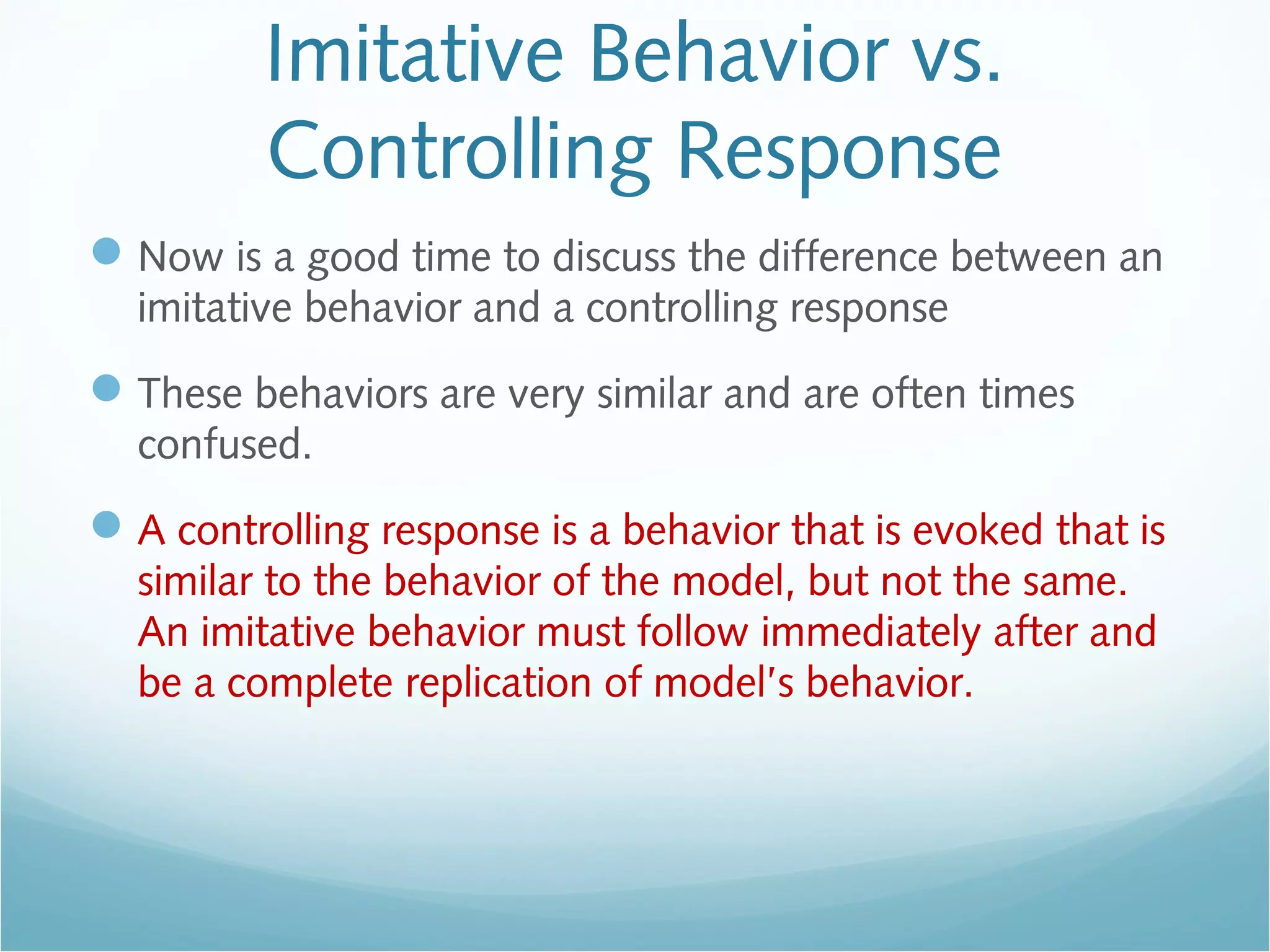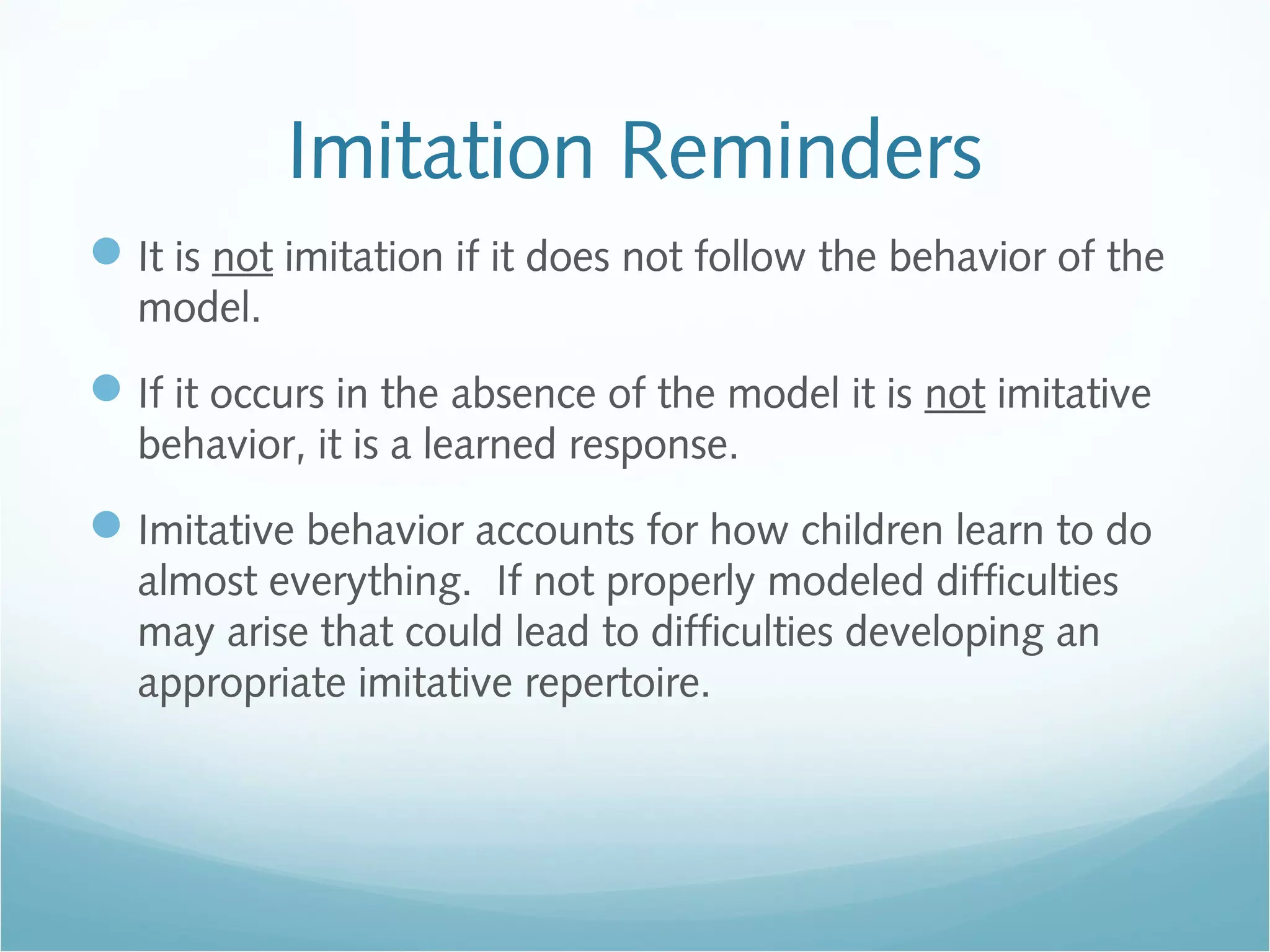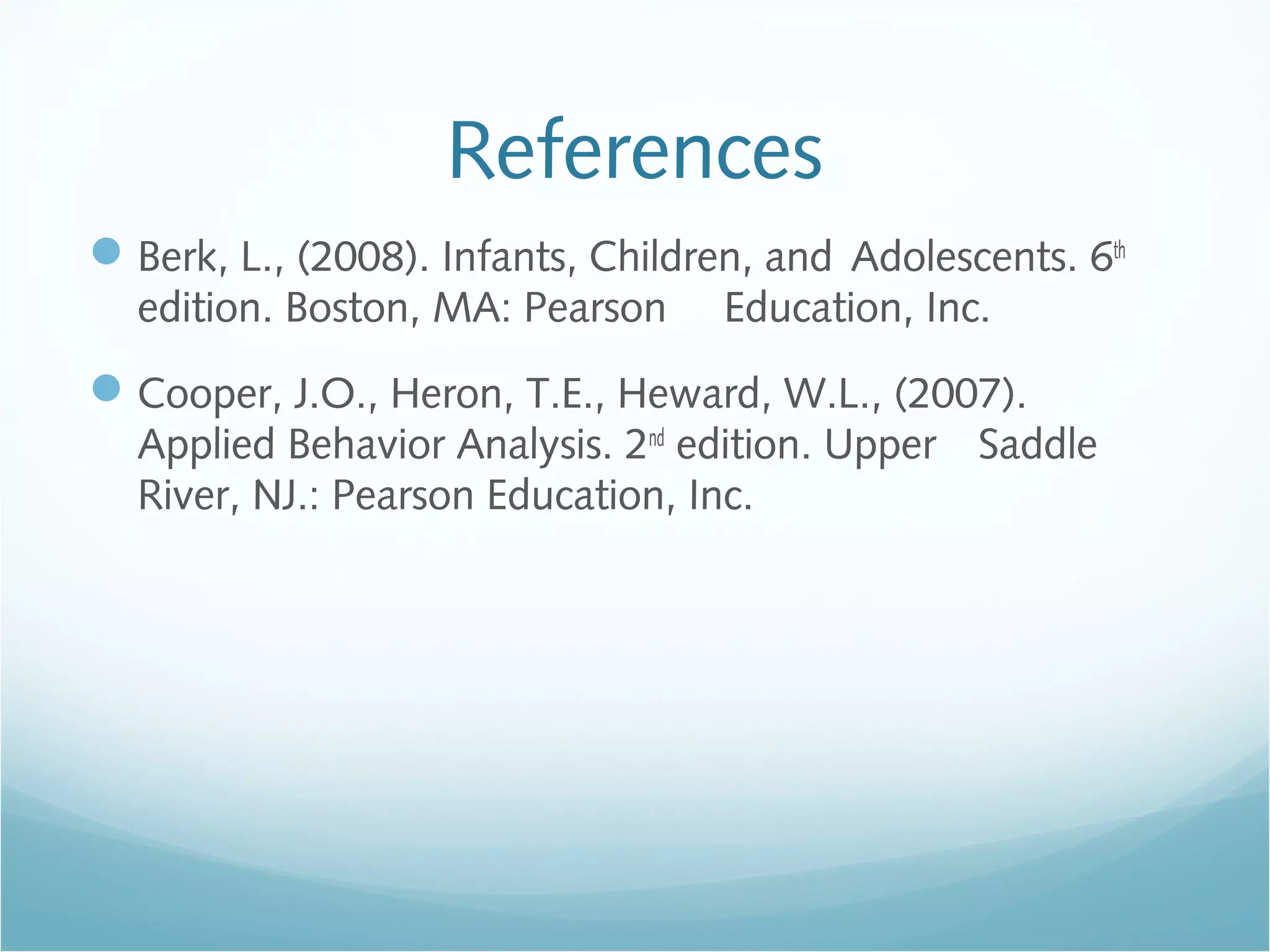Imitation is an important learning mechanism for children where they observe and replicate the behaviors of others. Imitation must occur immediately after the model behavior to be considered true imitation, whereas delayed responses are learned behaviors rather than imitation. Imitation training techniques use shaping and chaining with reinforcement to teach imitation skills to children who have difficulties imitating. Guidelines for imitation training include using brief sessions, reinforcing imitative responses, pairing reinforcers with praise, fading prompts gradually, and ending training once imitation occurs without prompts. The key difference between imitation and controlling responses is that imitation must exactly replicate the model's behavior.
